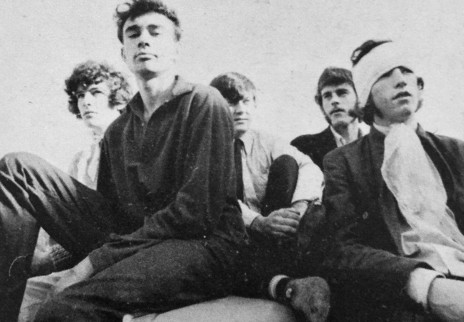Then they broke out as a paid live outfit, playing an R&B based set of numbers by the Rolling Stones, Kinks, Pretty Things, Them, John Mayall's Bluesbreakers and The Who at dances and parties in Rotorua, Hamilton, Taupo and Tauranga.
With Colman on board, the band evolved into a more professional outfit and starting running their own dances every Friday night in the Rotorua Fire Brigade Hall.
With Colman on board, the band evolved into a more professional outfit and starting running their own dances every Friday night in the Rotorua Fire Brigade Hall, playing to 200-plus teenagers. They got so big they had to move to the Commerce Hall attached to the Regent Theatre, where they performed to up to 400 punters with touring name acts like The Pleazers, The La De Da’s and The Bluestars.
By then, The Plague was the main act in the district and widely respected by Rotorua teenagers (but not by the parents of the teenagers). They had also picked up a few tricks from The Who's performance playbook.
“We broke equipment when the crowd looked bored. I did an imitation collapse in Hamilton and my brother tried to revive me. I used white spirit to light my guitar once,” remembers Tom Hutchison.
A Bay of Plenty Times article from July 1967 summarised the band’s success: “Since The Plague was originally formed at least seven other beat groups have grown up in and around Rotorua. With only one regular dance hall operating in town, The Plague opened its own dance. The group has now booked its own hall months ahead on the strength of its big crowds.”
The article also noted Hutchison's switch from guitar to organ and that the band was emerging from a month and half’s break with a Sunday show, playing with The (NZ) Velvet Underground. Corben Simpson joined in on lead guitar for that one.
“Corben was a good musician, eccentric, but affable. He loved playing ‘The Girl From Ipanema’, but wasn’t allowed to on stage,” says Hutchison.
Simpson didn’t last long, shuffling off to Hamilton then Wellington in a number of bands, before finding his feet as a solo act. His replacement was a mohawk haired 16-year-old called Max McDonnell, who auditioned successfully as Simpson’s replacement in mid-1967, by which time the band was playing pop music of the day with a strong soul influence. A typical set would open with The Small Faces' screamer, ‘Tin Soldier’, and finish with The Vanilla Fudge's arrangement of ‘You Keep Me Hanging On’. The Plague played no originals.
Max McDonnell: “I was sixteen years old and heavily into Chicago blues, my hero was Mike Bloomfield. I guess it was quite novel for them. Here I was with a mohawk, jeans and ripple-soled shoes and the boys were wearing paisley shirts and Beatle boots.” Shortly after Max joined, he introduced a mate called Ian Vandy as vocalist.
The Plague died out sometime around the end of the decade and was forgotten by everyone except the 1960s teenagers of the Waikato and Bay of Plenty regions. Arthur Townsend's widow, Sue, sums up. “They were wonderful fun days. Never made any money after paying for hamburgers, petrol and booze. They had their gear on permanent hire purchase; as soon as they paid one piece of gear off they updated.”
